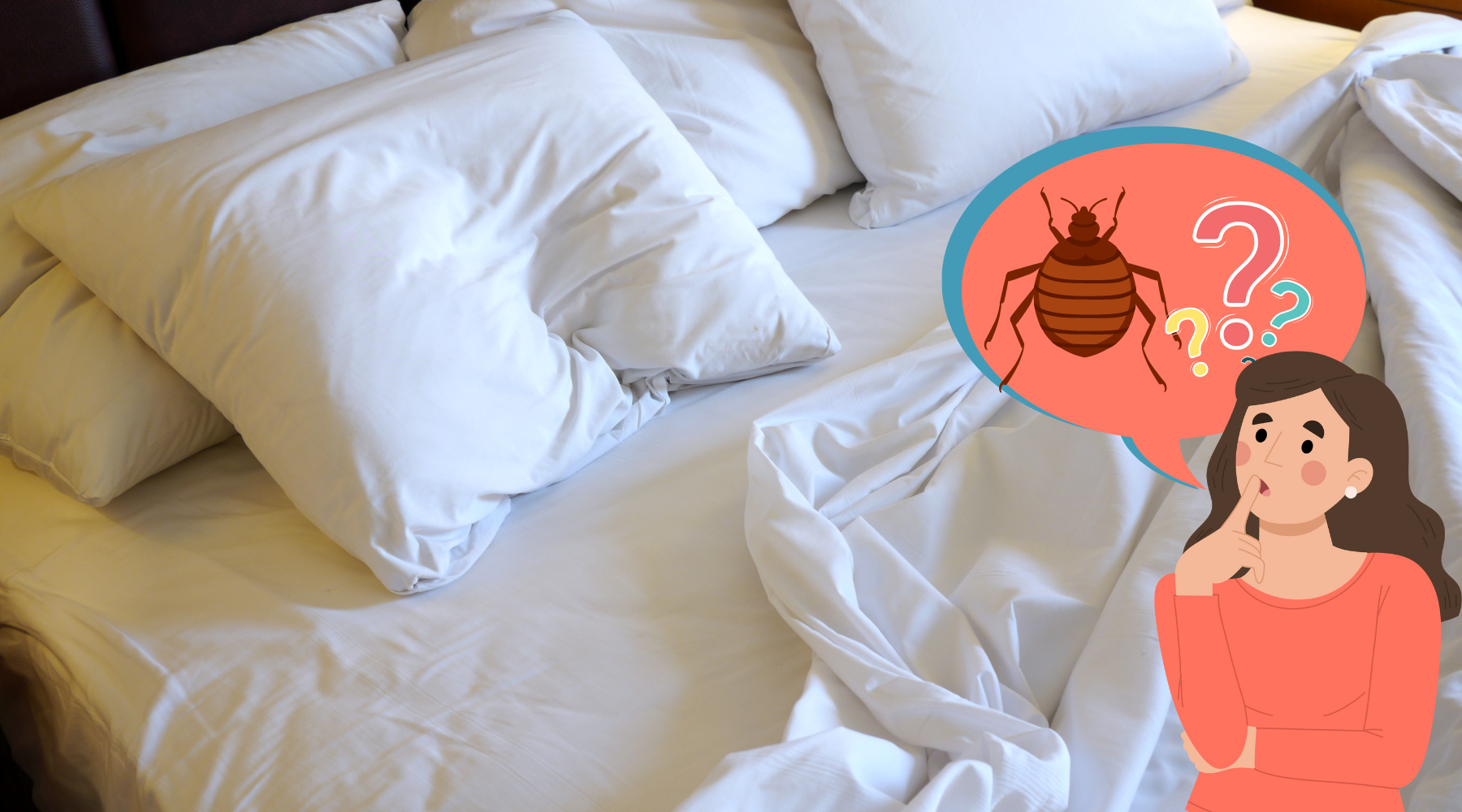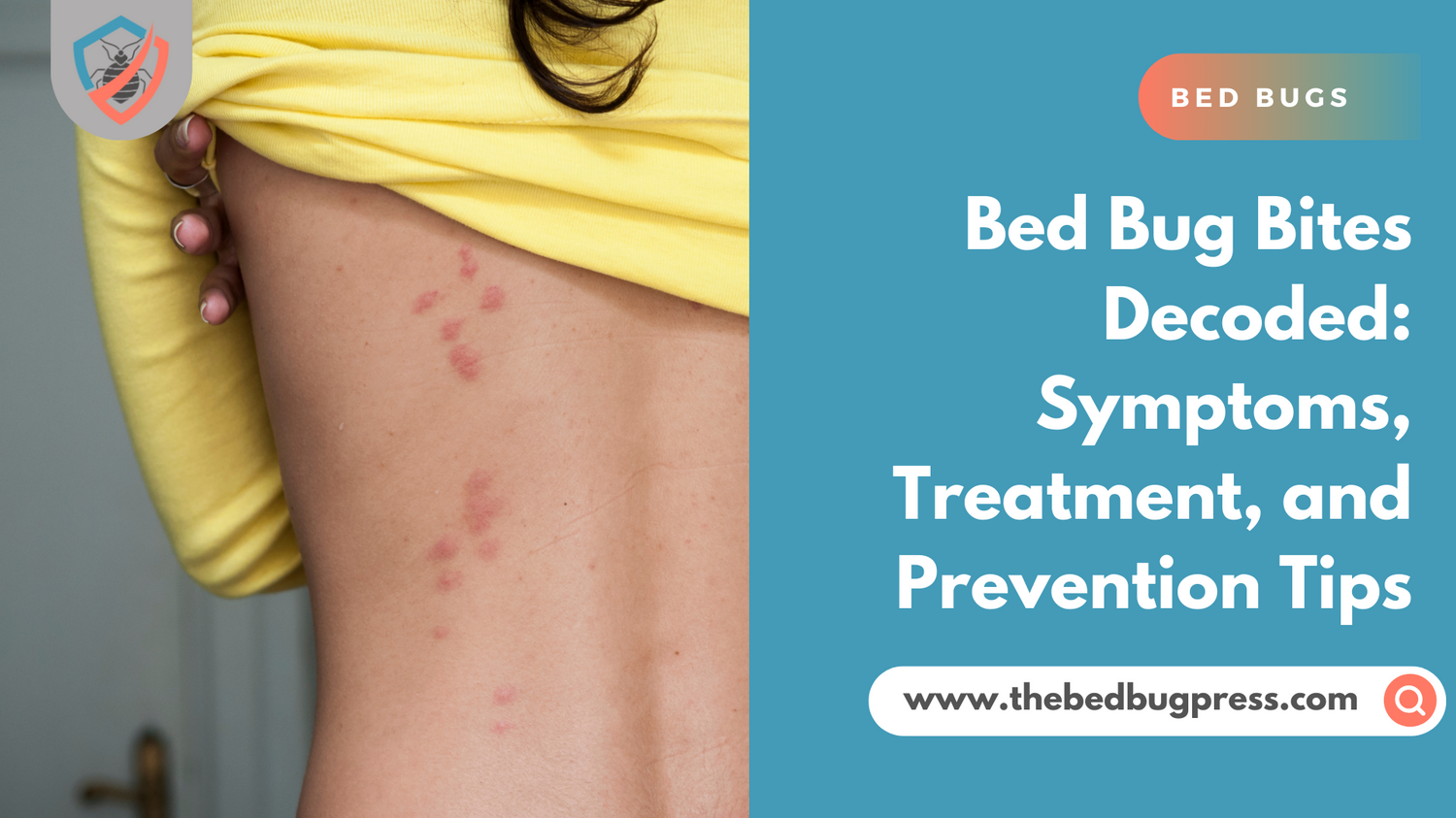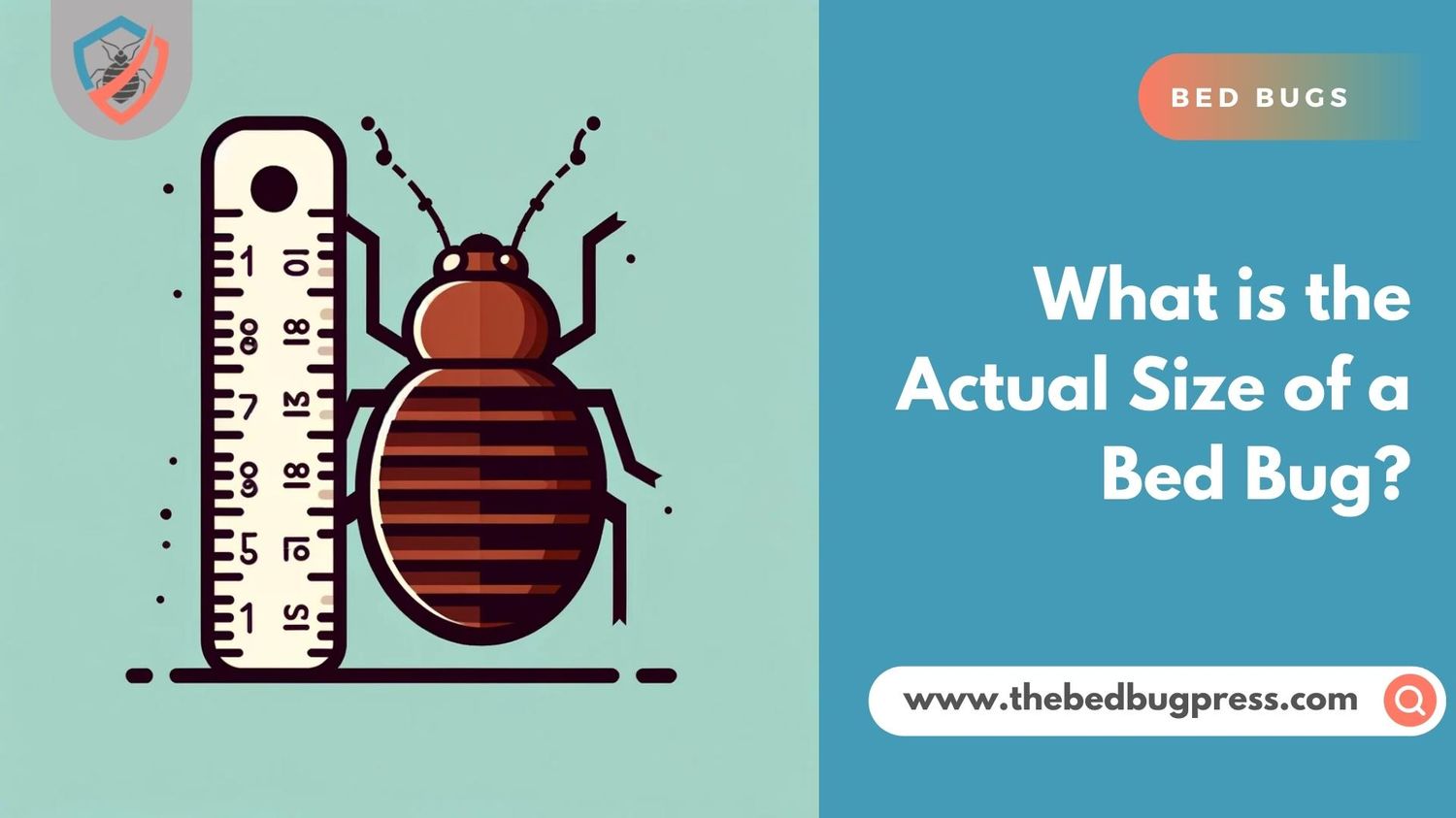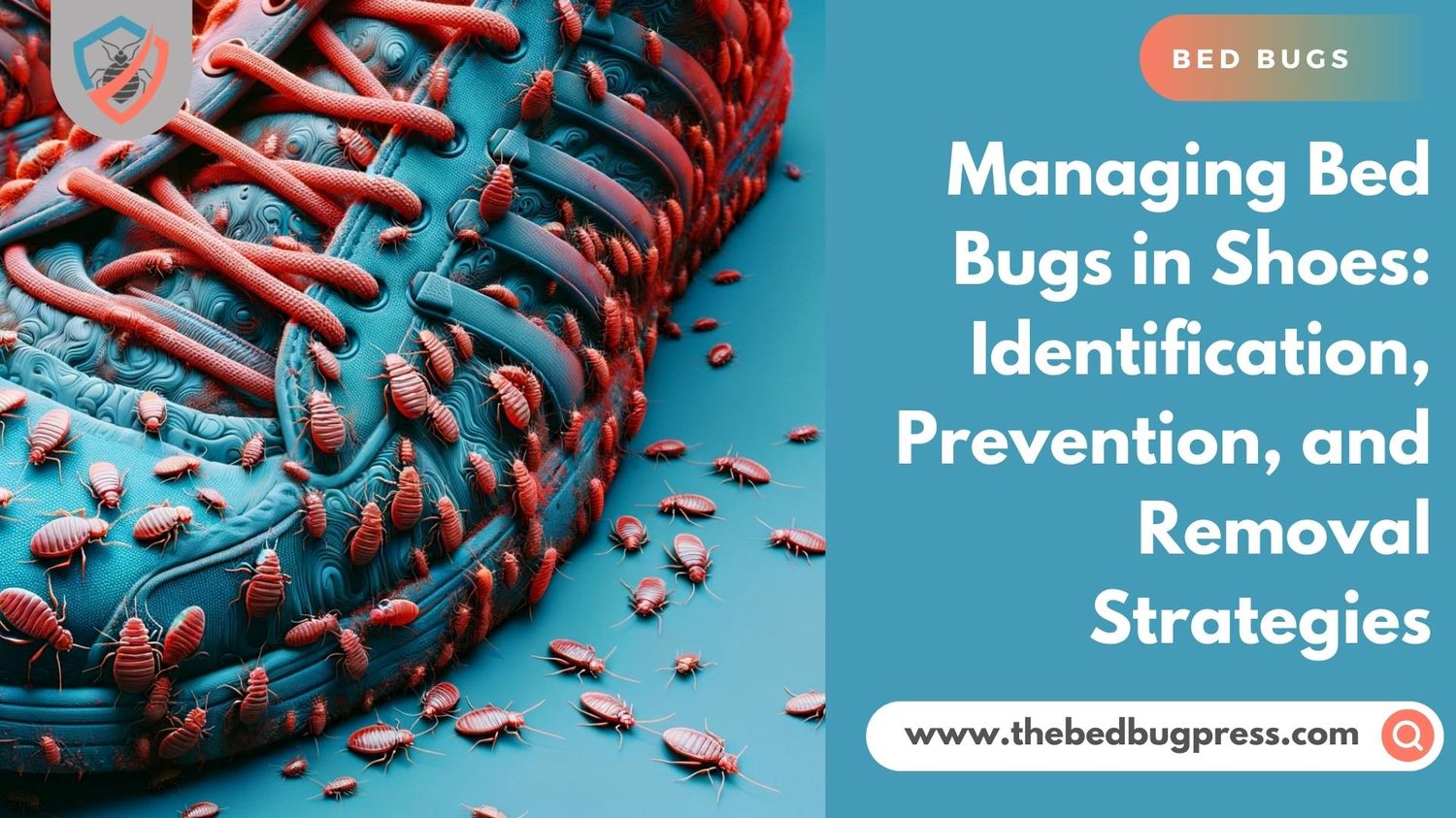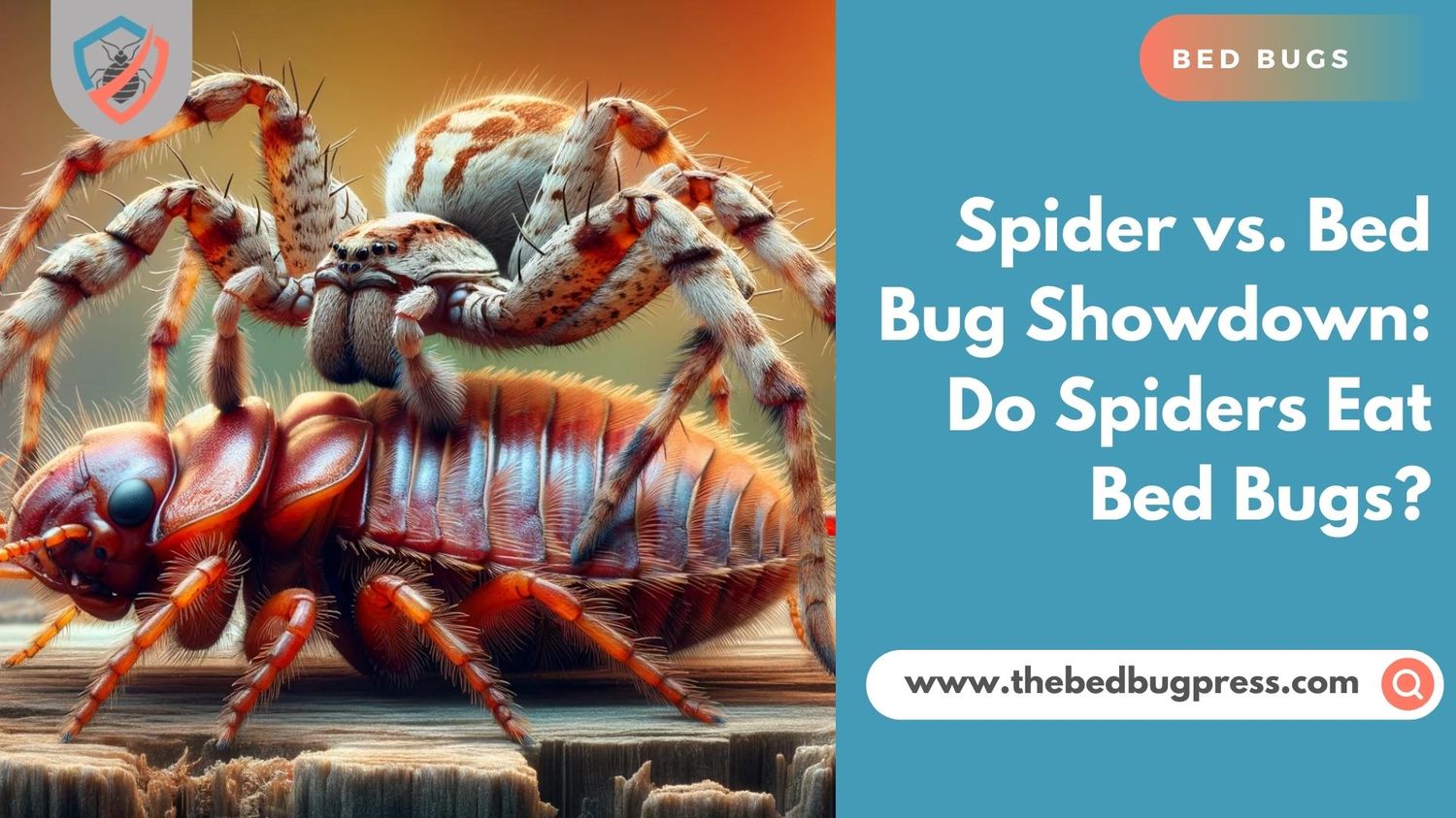It is given that bed bugs are bothersome and unwelcome little buggers that can reside in your humble abodes. And one clear indication that you might have a bed bug infestation is finding these minuscule critters on your sheets.
So, in this detailed guide, we’ll take a deep dive into the appearance of bed bugs on your beloved linens. You’ll get all the info you need to spot them and take the necessary steps. Whether you’ve noticed some suspicious marks on your bedding or want to be prepared, let’s explore the intriguing world of bed bugs and uncover their distinct visual traits on sheets. Let’s get started!
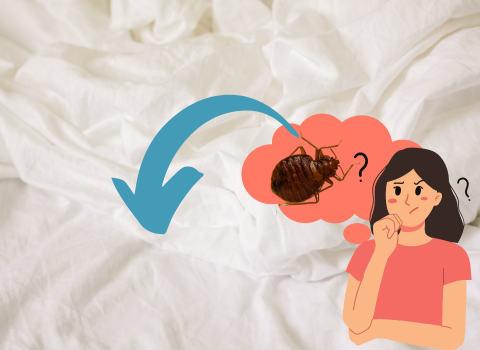
Indications of Bed Bugs on Sheets
Bed bugs are notorious pests that can infest our homes and disrupt our peace of mind. One of the key areas is where they leave behind signs of their presence in our bedsheets. Detecting indications of bed bugs on sheets is crucial for early identification and effective treatment.
Below are various early sign signs indicating a bed bug infestation on your sheets. By understanding these indications or early warning signs, you can take proactive steps to address the problem and restore a bed bug droppings-free sleeping environment.
Visual Marks:
Bed bugs often leave behind visible marks on sheets, which can serve as a prominent indication of their presence. These marks may appear as small, dark spots or stains on the fabric. They are typically caused by the bed bugs’ excrement or the blood they feed on. By closely examining your sheets, you can identify these distinctive marks, alerting you to a potential bed bug infestation.
Rusty or Dark Stains:
Another common indication of bed bugs on sheets is the presence of rusty or dark stains. These stains result from bed bugs being crushed or squashed while you sleep. They may appear as reddish-brown spots, resembling dried up blood stains. Finding such stains on your sheets can be a strong indication of an active bed bug infestation in your sleeping area.
Bed Bug Excrement Smears:
Bed bugs also leave behind bed bug excrement smears on bed sheets, which can be an insightful clue to identify bed bugs and their presence on your sheets. These smears are dark in color and may resemble ink spots. If you notice any unusual discoloration on your sheets that cannot be attributed to other causes, it is advisable to inspect for bed bugs and their fecal smears.
Live or Dead Bed Bugs:
Sometimes, you may be fortunate (or unfortunate) enough to spot live or dead bed bugs directly on your sheets. These insects are small and reddish-brown in color, with a flat, oval-shaped body. Discovering either bed bug feces or live bed bugs themselves is a definitive indication of an infestation, and prompt action should be taken to address the issue.
Being aware of the indications and signs of bed bugs while on sheets is crucial for timely detection and effective management of infestations. By paying close attention to visual marks, rusty or dark stains, fecal smears, and the presence of live or dead bed bugs, you can identify a bed bug problem early on.
Remember to take immediate steps to kill bed bugs, such as contacting a professional pest control service and thoroughly treating your bedding to eliminate the infestation. By staying vigilant and proactive, you can safeguard your sleep environment and prevent further discomfort caused by bed bugs.
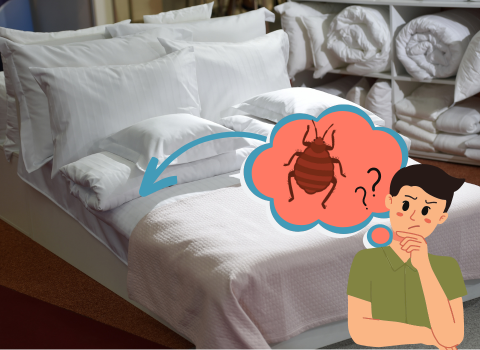
Traces of Bed Bugs on Bedding
Bed bugs are unwelcome pests that can invade our homes and disrupt our peace of mind. One of the key areas where bed bugs hide and they leave behind evidence of their presence is on our bedding. Detecting traces of bed bugs on bedding is essential for early identification and effective treatment.
Small, Dark Spots:
Traces of bed bugs on bedding often manifest as small, dark spots. These spots are commonly caused by bed bug excrement, which appears as tiny dots or stains on the fabric. By carefully examining your bedding, particularly in the seams and crevices, you may notice these telltale spots. Identifying them can serve as an initial indication of a potential bed bug infestation.
Blood Stains:
Another notable trace of bed bugs on bedding is the presence of blood stains. Bed bugs feed on human blood, and if they are accidentally crushed or squashed while engorged on a blood meal, they may leave behind reddish-brown stains on your sheets or pillowcases. These stains can be an alarming sign of an active bed bug infestation.
Cast Skins:
As bed bugs go through their life cycle, they molt and shed their exoskeletons, leaving behind cast skins. These discarded exoskeletons can often be found on bedding, especially in areas where adult bed bugs would tend to hide, such as mattress seams or headboard crevices. Finding these translucent, shell-like remnants is a strong indication of an infestation and the presence of adult bed bugs somewhere in your sleeping area.
Musty Odor:
In some cases, a musty odor may be present when there is a significant bed bug infestation on bedding. This distinctive odor is often described as sweet or sickly, and it can be quite pungent. If you notice an unusual musty smell emanating from your bedding, it is important to investigate further for the presence of bed bugs.
Recognizing the traces and signs of bed bugs on bedding is crucial for early detection and effective management of infestations. By paying close attention to small, dark spots, blood stains, cast skins, and any unusual odors, you can identify a bed bug problem in its early stages.
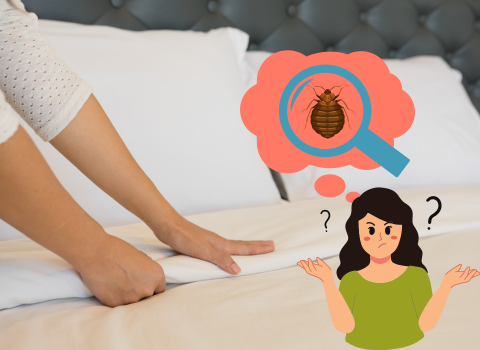
Identifying Bed Bugs through Sheet Marks
Identifying bed bugs through sheet marks is an essential skill for homeowners concerned about these notorious pests. Bed bugs leave behind distinct marks on sheets, providing valuable clues about their presence.
Small, Reddish-Brown Stains:
One common type of sheet mark left by bed bugs is small, reddish-brown stains. These marks are typically caused by the bugs being crushed or squashed while feeding on the human blood below. When you come into contact with a bed bug or roll over on one during sleep, it may leave behind these distinctive stains on your sheets. Keep an eye out for these tiny, discolored spots as potential evidence of bed bug activity.
Linear or Clustering Bed Bug Bites Patterns:
Bed bugs often feed in a linear or clustered pattern on the skin, and this can be reflected in the marks they leave on sheets. Look for rows or clusters of small bite marks on your skin. These marks may appear as tiny, red welts or raised bumps. While individual bite marks may not be conclusive evidence of bed bugs, the presence of multiple bed bug bites in a linear or clustered arrangement can strongly suggest their presence.
Fecal Stains:
Bed bugs excrete fecal matter, which can leave behind noticeable stains on sheets. These stains often appear as small, dark spots or smears. The fecal matter itself is composed of digested blood and can have a rusty or dark brown appearance. If you come across such stains on your sheets, it may indicate the presence of bed bugs and their fecal deposits.
Bed Bug Eggs or Shells:
In some cases, bed bug eggs or eggshells may be visible on sheets. The eggs of bed bugs are itty-bitty, pearly white, and about as small as the head of a pin. They may be laid individually or in clusters. If you notice these minuscule eggs or their empty shells on your sheets, it is a strong indication that bed bugs have been reproducing and infesting your sleeping area.
Identifying bed bugs through the marks they leave on sheets is an important step in addressing an infestation. By recognizing small, reddish-brown stains, linear or clustering patterns of the insect bites, fecal stains, and the presence of bed bug eggs or shells, you can confirm the presence of these pests.
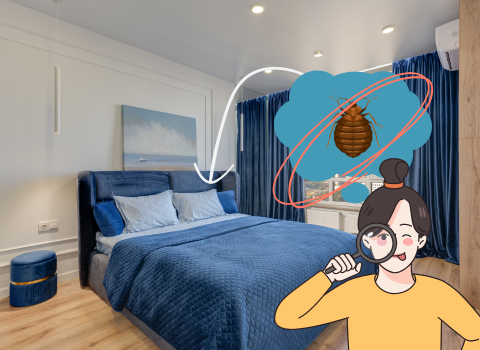
Finding the Bed Bug Harborage Sites
When dealing with a bed bug infestation, it is essential to locate their harborage sites, which are areas where these pests hide and reproduce. Identifying these various hiding places and spots is crucial for effective treatment and eradication.
Mattresses and Box Springs:
One of the primary harborage sites for bed bugs is within mattresses and box springs. Bed bugs are nocturnal creatures that prefer to stay close to their hosts, which means they often hide in the seams, folds, and crevices of mattresses and box springs. Inspect these areas thoroughly, paying attention to any dark spots, eggs, or live bed bugs.
Bed Frames and Headboards:
Bed bugs often take refuge in cracks, joints, and voids of bed frames and headboards. These areas provide them with easy access to their hosts during the night. Carefully examine these parts of your bed, using a flashlight if necessary, to spot any signs of bed bugs such as excrement, shed skins, or live insects.
Furniture and Upholstery:
Bed bugs can also infest furniture, especially upholstered pieces like couches, chairs, and recliners. Check the seams, cushions, and any other hidden areas where bed bugs could find shelter. They may leave behind stains, eggs, or even their presence itself. Remember to inspect any nearby furniture in bedrooms or common areas where bed bugs can easily move between spaces.
Cracks and Crevices:
Bed bugs are adept at hiding in small cracks and crevices throughout the room. Look for early signs of bed infestation in baseboards, electrical outlets, wallpaper edges, and even behind loose or peeling wallpaper. These narrow spaces offer bed bugs a safe haven during the day, allowing them to remain close to their food source.
Luggage and Personal Belongings:
Bed bugs are pros when it comes to hitching rides, effortlessly invading suitcases, backpacks, and all sorts of personal stuff. If you have recently traveled or brought used furniture into your home, inspect your bags and items thoroughly. Pay attention to seams, pockets, and any folds where bed bugs may have found their way inside.
Locating the harborage sites of bed bugs is crucial for effective treatment and eradication. By diligently inspecting mattresses, box springs, bed frames, headboards, furniture, cracks, crevices, and personal belongings, you can increase your chances of finding and eliminating these persistent pests.
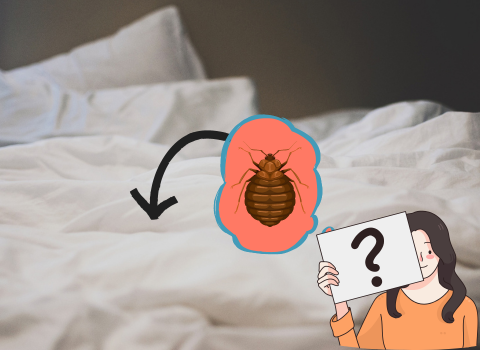
How to Get Rid of Bed Bugs on Sheets
Discovering bed bugs on your sheets can be distressing, but there are effective methods to get rid of them and restore a clean and bug-free sleeping environment.
By following these recommendations, you can tackle the problem head-on and regain a peaceful sleep without the presence of these unwanted pests.
Wash and Dry at High Temperatures:
Start by removing the infested sheets and immediately placing them in a sealed plastic bag. Take them directly to the washing machine and launder them on the highest possible temperature setting. Bed bugs and their eggs cannot survive high heat, so using hot water and a high-temperature dryer cycle will effectively kill them. Make sure to dry the sheets thoroughly as well.
Vacuum Thoroughly:
Use a vacuum cleaner with a brush attachment to thoroughly vacuum the mattress, box spring, and surrounding areas. Pay close attention to seams, crevices, and any cracks where bed bugs may hide. After vacuuming, seal the vacuum bag or empty the canister into a plastic bag and dispose of it outside your home immediately.
Encase the Mattress and Box Spring:
Invest in bed bug-proof mattresses and box spring encasements. These encasements are designed to trap any remaining bed bugs inside and prevent them from escaping or infesting your bedding again. Be sure to choose encasements that are specifically labeled as bedbug-proof and allergen-resistant.
Treat the Surrounding Areas:
Apply a residual bed bug spray or dust to the cracks, crevices, and other hiding spots near the bed. Be sure to follow the instructions on the product label and use it in accordance with safety guidelines. Additionally, consider using bed bug traps or interceptors around the legs of the bed to capture any bed bugs trying to climb onto the the bed frame.
Maintain Vigilance and Monitor:
Continue to monitor your sheets, mattress, and surrounding areas for any signs of bed bug activity. Regularly inspect your bedding, and second hand furniture, especially after traveling or introducing used furniture into your home. Promptly address any potential signs of reinfestation to prevent the bed bugs from returning.
Conclusion:
Getting rid of bed bugs on sheets requires a combination of thorough cleaning, high-temperature laundering, vacuuming, encasements, and targeted treatments. By following these steps and remaining vigilant, you can successfully eliminate bed bugs on sheets and create a bed-bug-free sleeping environment.
Remember, if the infestation persists or becomes overwhelming, it is advisable to seek professional assistance from a local pest control expert who specializes in bed bug eradication.

